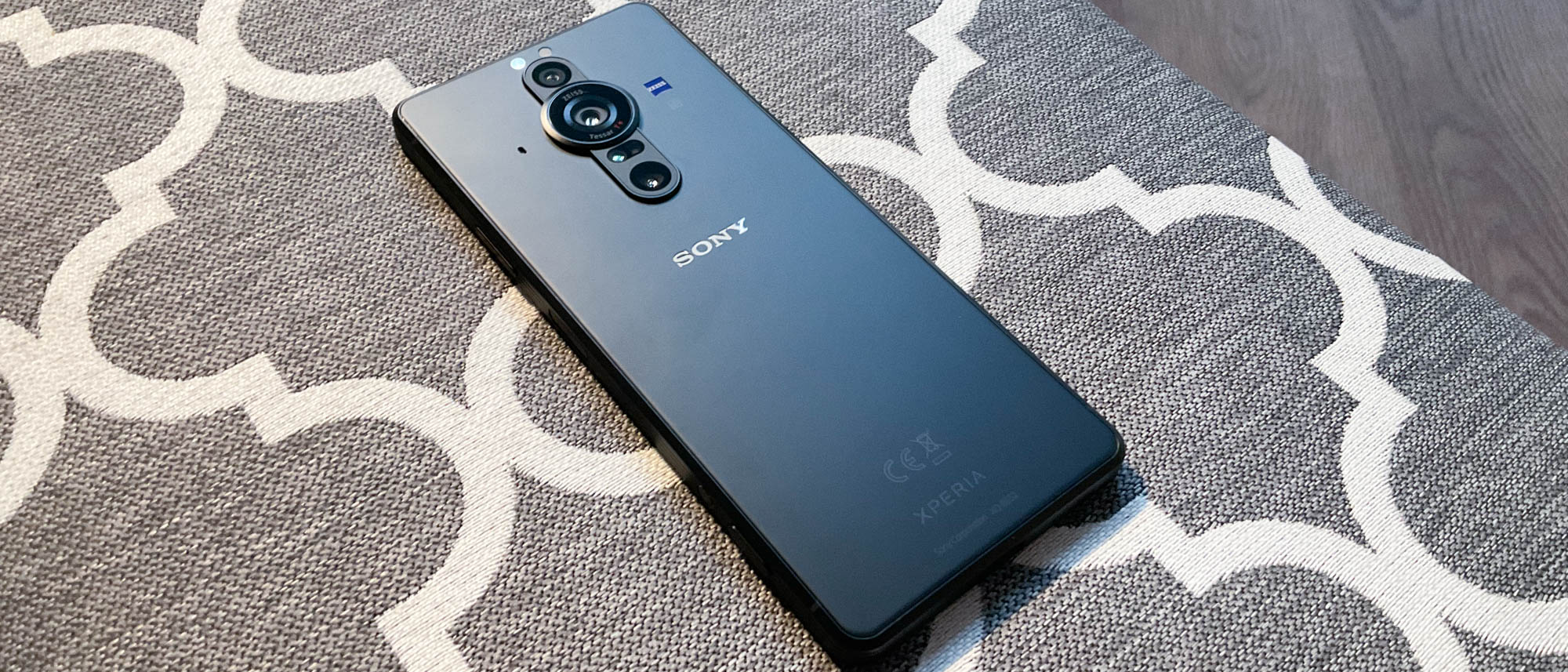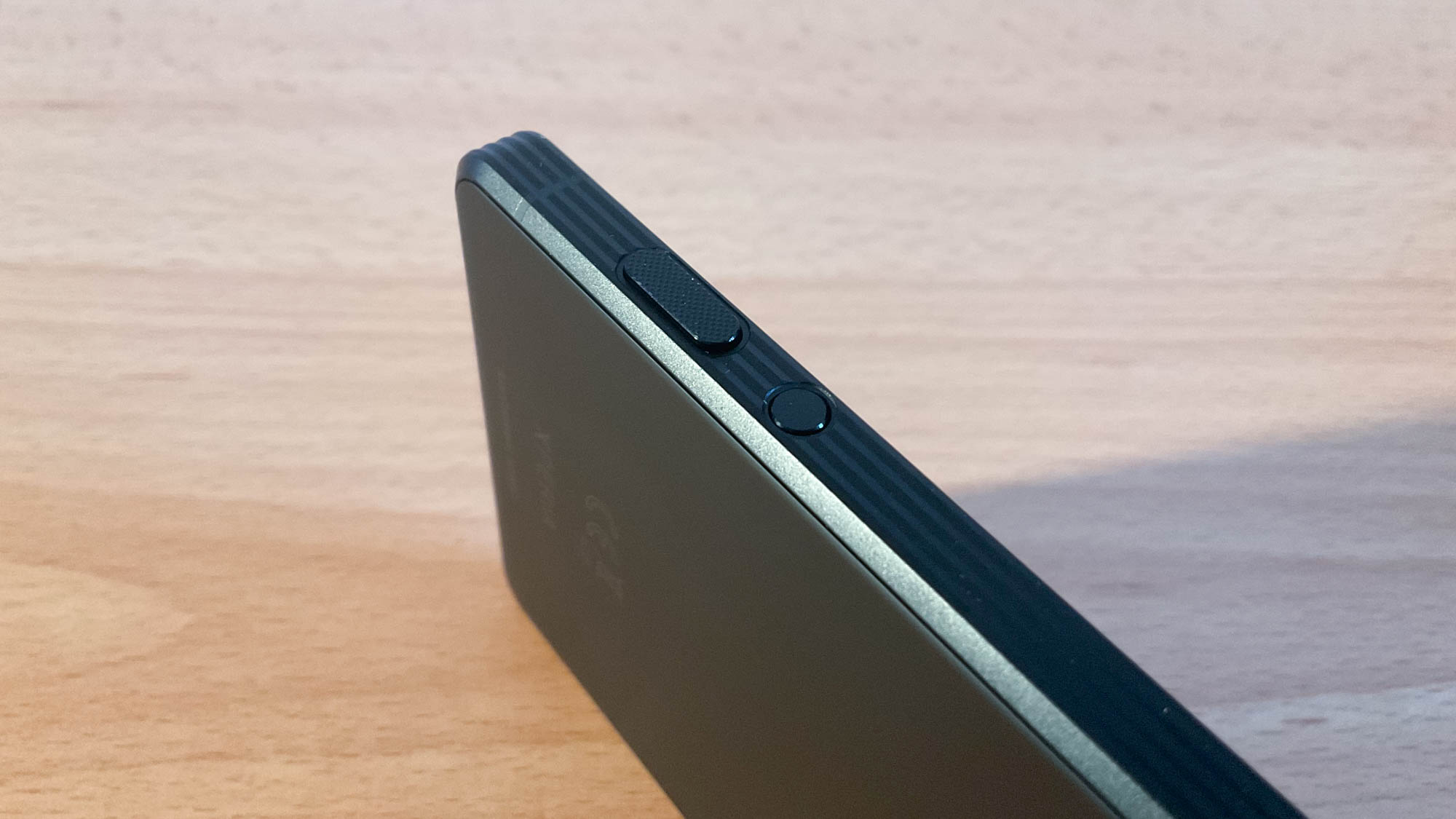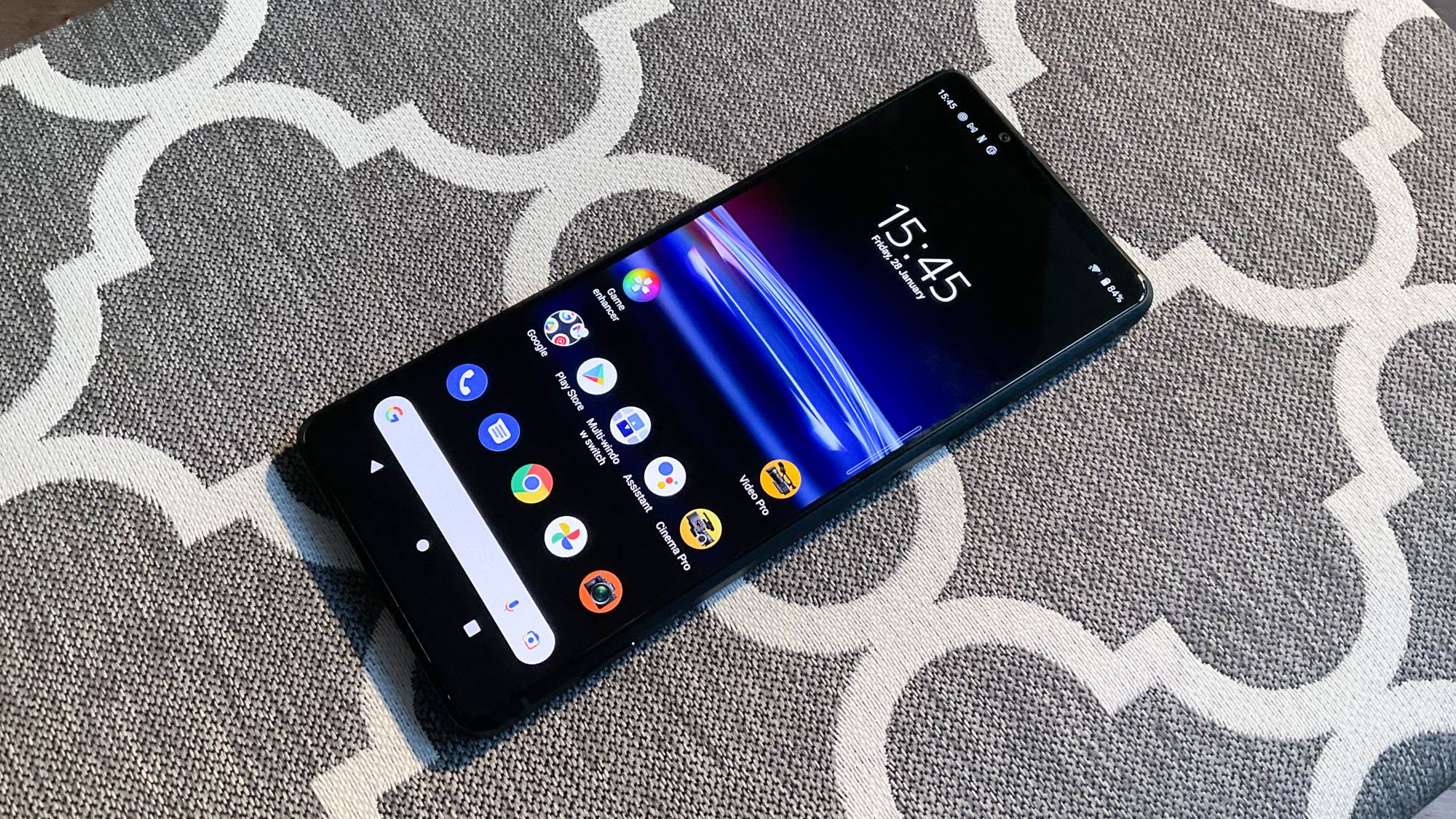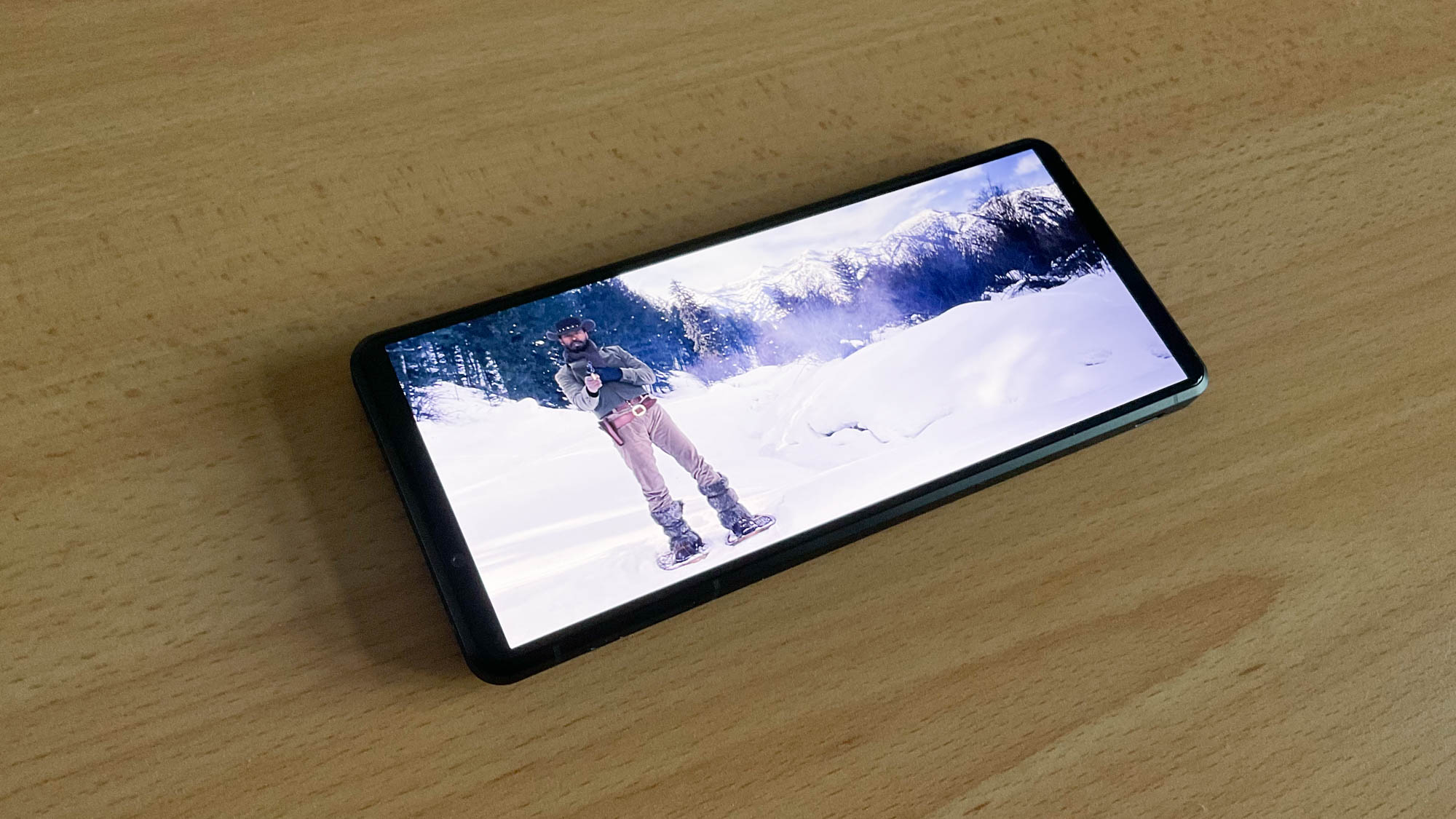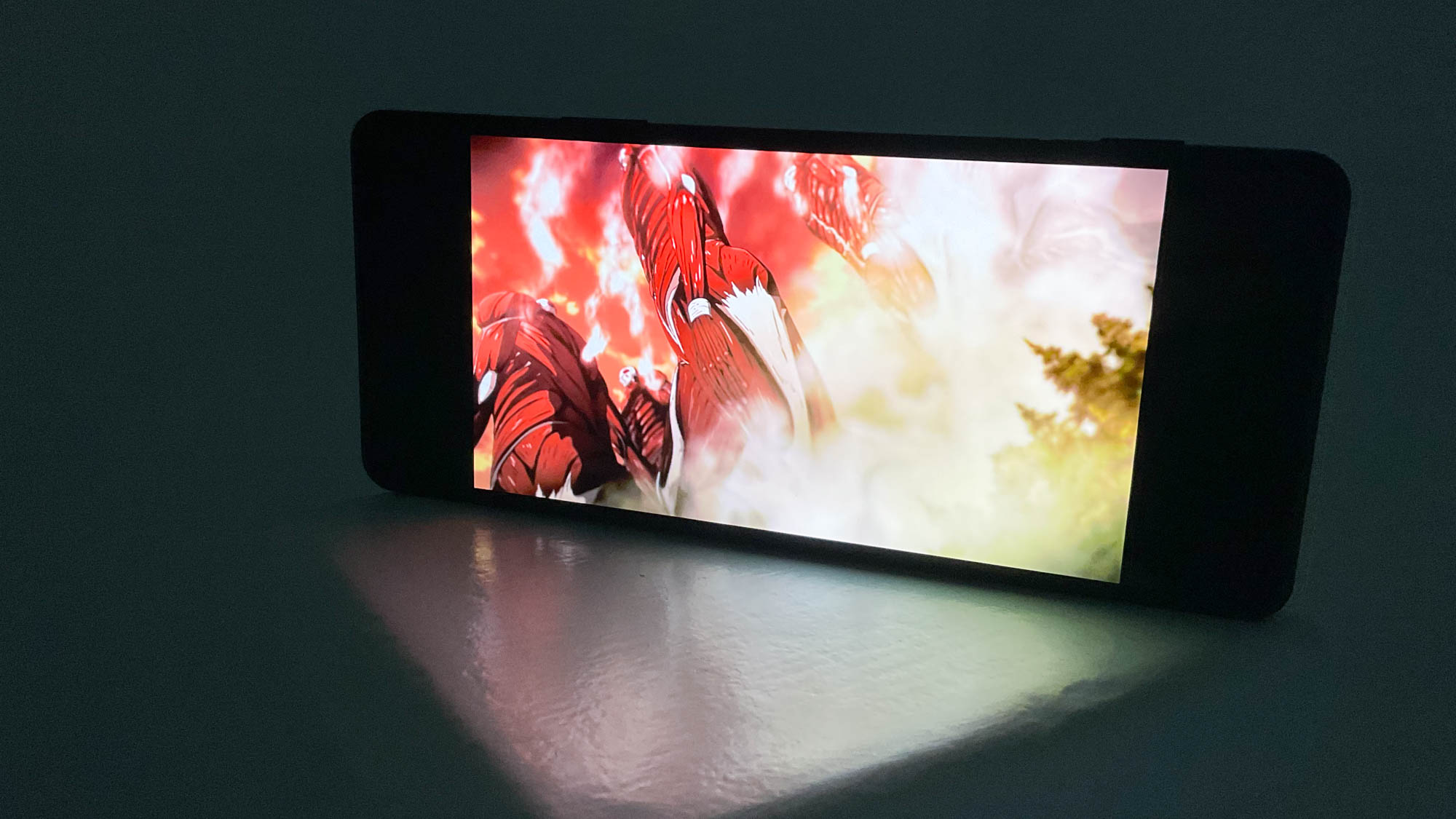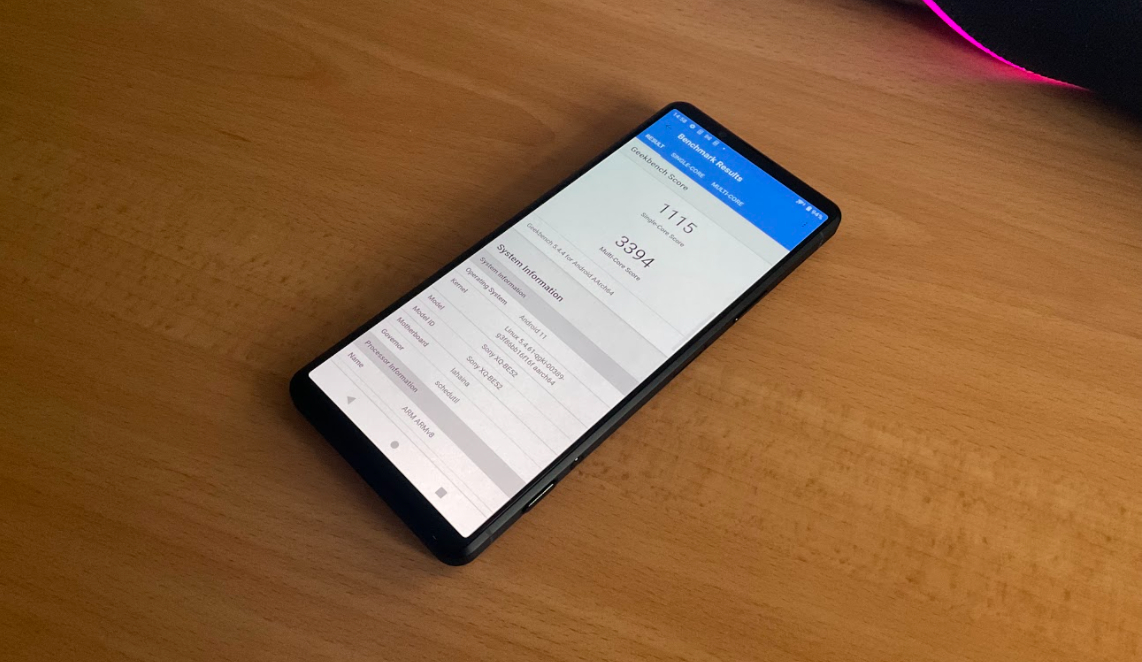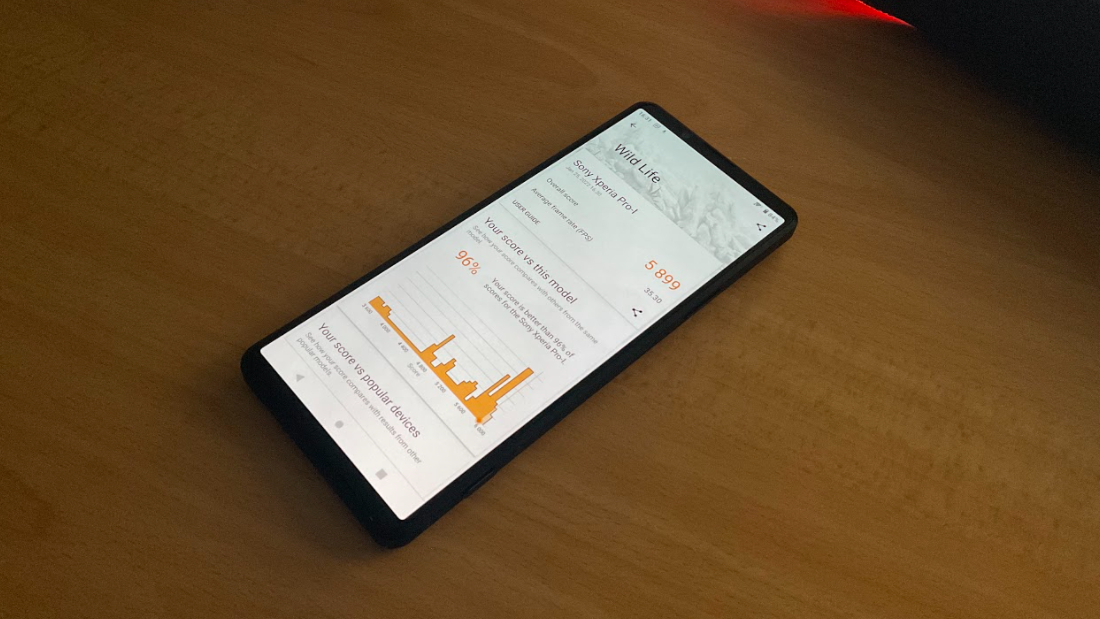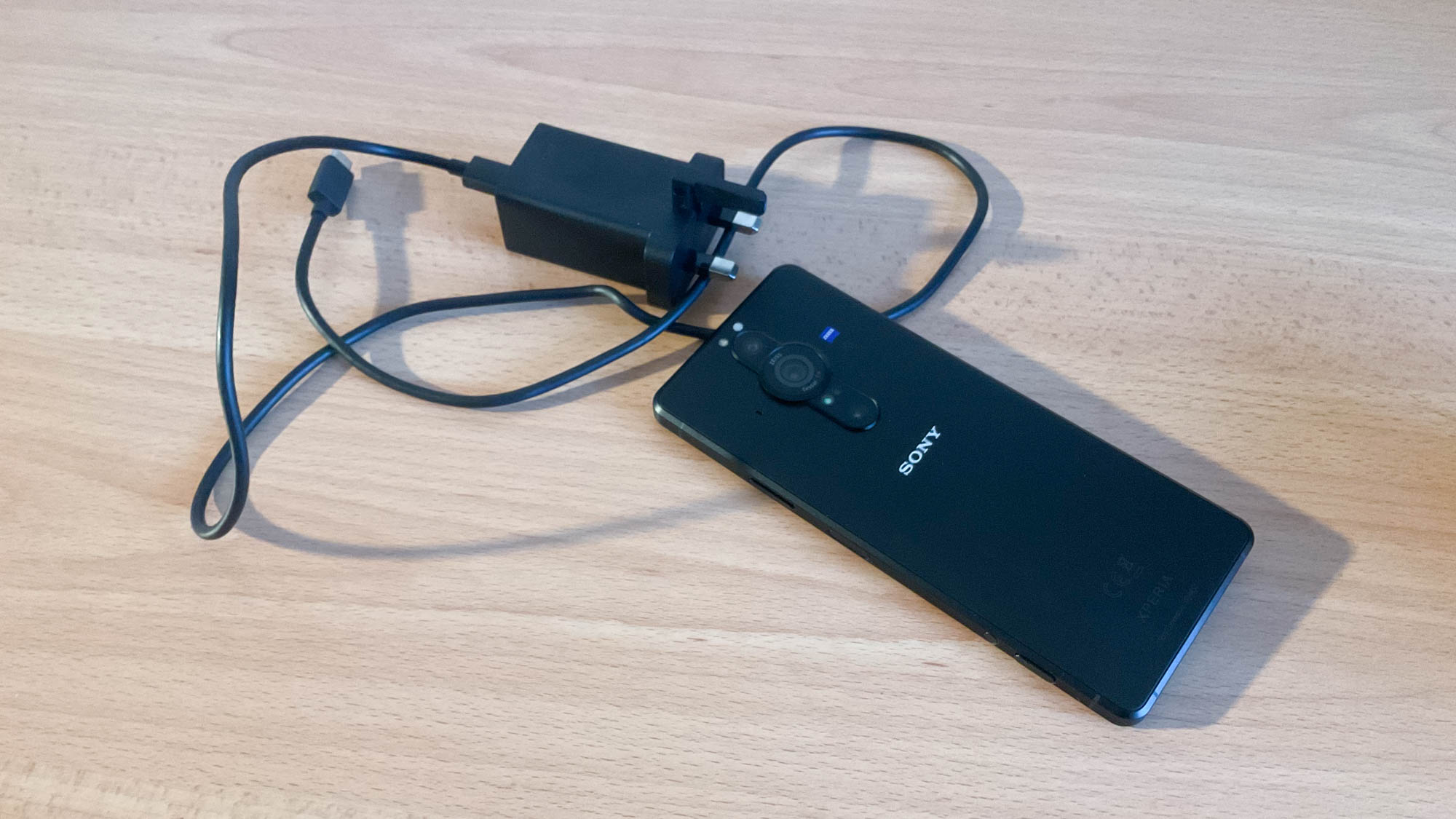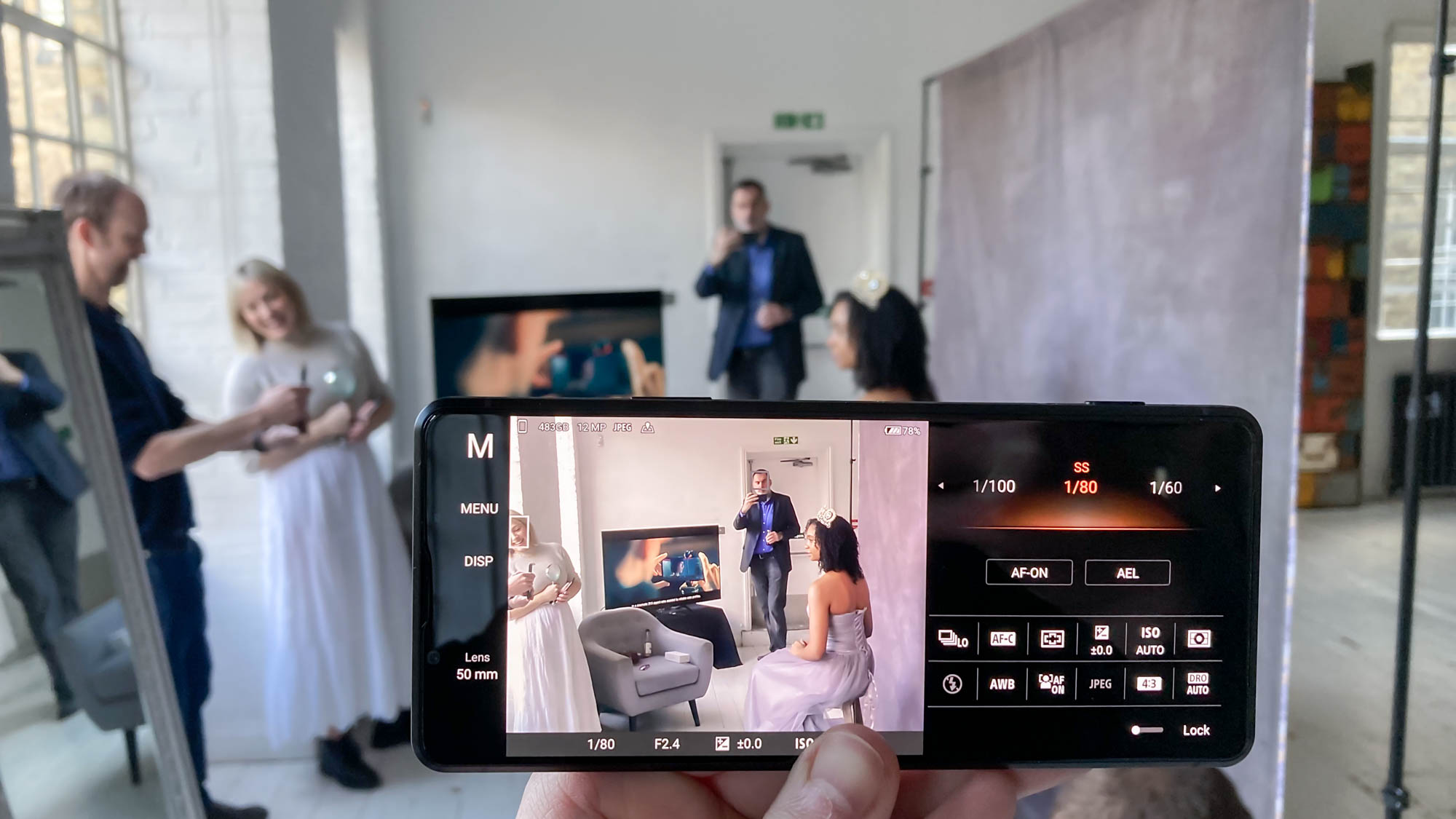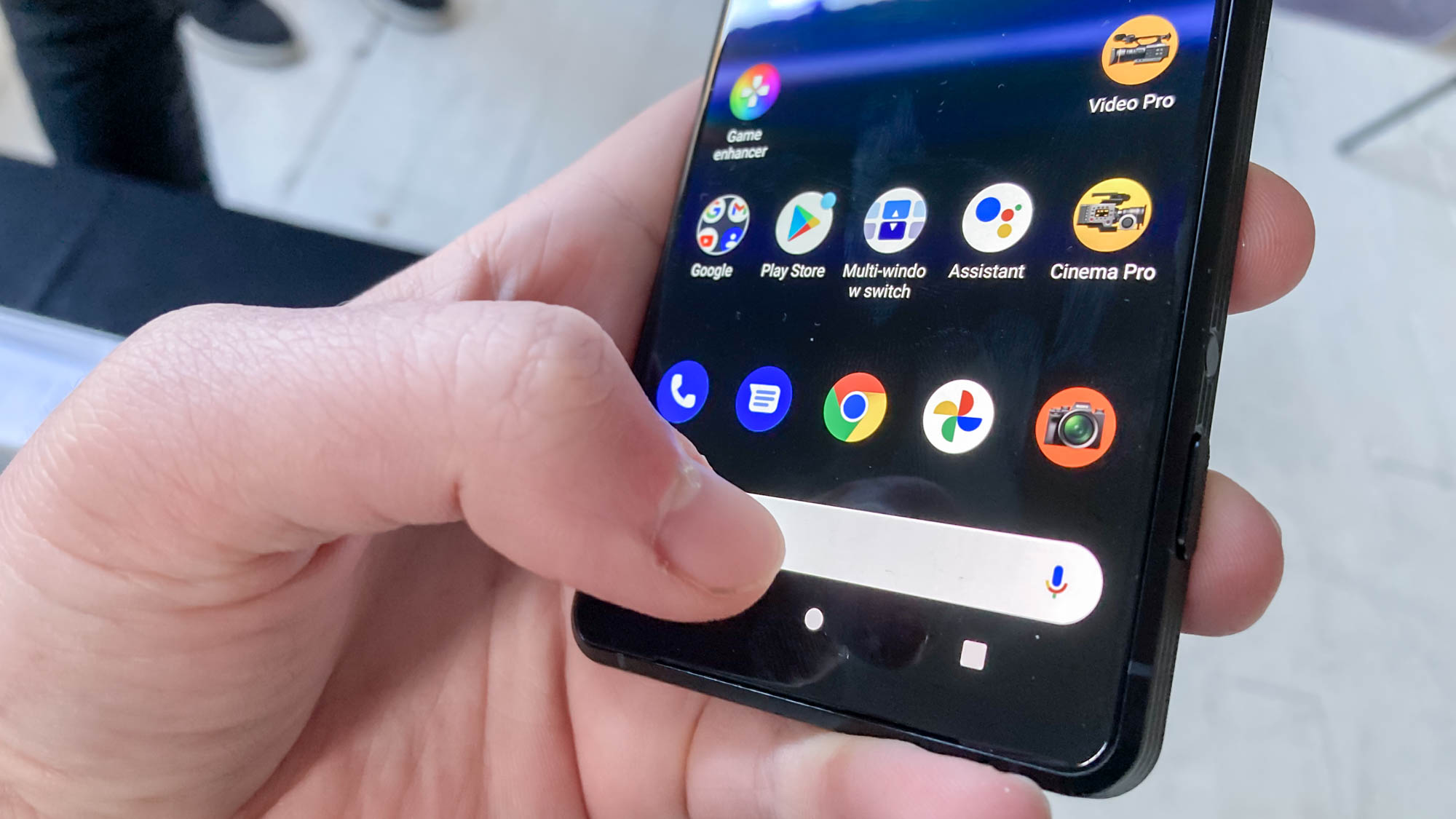Laptop Mag Verdict
The Sony Xperia Pro-I is aptly made for photography and cinematography professionals, adding a killer camera to a powerful Android smartphone. But it’s more of a camera alternative than the camera-smartphone hybrid it sets out to be.
Pros
- +
Beautiful 21:9 120Hz OLED display
- +
First-in-class cameras
- +
Camera shutter button
- +
Stunning audio
- +
Good battery life…
Cons
- -
…unless using heavy-duty apps
- -
Premium price
- -
No wireless charging
- -
4K isn’t noticeable
- -
Long footprint is not for everyone
Why you can trust Laptop Mag
Price: $1,799/£1,599
OS: Android 11
Display: 6.5-inch 4K (3840 x 1644) 120Hz HDR OLED
CPU: Qualcomm Snapdragon 888 5G
RAM: 12GB
Rear cameras: 12MP wide (ƒ/1.7); 12MP ultrawide (ƒ/2.3); 12MP 50mm telephoto (ƒ/2.3-2.8)
Front camera: 8MP (f/2.0)
Storage: 512GB
Battery: 9:20~
Size: 6.5 x 2.8 x 0.35 inches
Weight: 7.4 ounces
With the Sony Xperia 1 III making its mark by being the de facto Android smartphone for creators, Sony now takes it up a notch with the Xperia Pro-I. More camera than smartphone, the Pro-I’s standout feature is the 1-inch Exmor RS CMOS image sensor Sony managed to fit in the smartphone. Or, more specifically, a 1.0-type sensor.
This is the same image sensor you’ll find on Sony's RX100 VII, albeit a scaled down version of it. This isn’t a smartphone that relies on AI to mimic the clarity and detail found in professional-grade cameras, it’s a proper camera that naturally captures images. Although, it’s other camera lenses are the same one’s found on the more affordable Xperia 1 III and Xperia 5 III. Plus, it doesn’t even bear the same 105mm telephoto lens, as it sports a 50mm focal length instead.
This begs the question: can Sony justify the $1,799 price tag despite the $1,299 Xperia 1 III already being a creator-focused smartphone? Well, yes and no, as true camera enthusiasts will enjoy the photography- and new videography-focused apps, and will certainly make the most out of the upgraded image sensor producing natural imagery. But the Pro-I’s bumped-up price tag only makes Sony’s already niche category of smartphones a niche-er product.
Sony Xperia Pro-I price and configurations
The Xperia Pro-I with 12GB of RAM and 512GB of storage will set you back $1,799/£1,599, which is significantly more affordable than the previous $2,500 Xperia Pro smartphone. That's good news for camera enthusiasts, but it’s still quite the price jump from the company’s other flagship smartphone, the $1,299/£1,199 Xperia 1 III. However, with the 1-inch Exmor RS CMOS image sensor it has onboard, it’s worth looking at what you’re paying for instead of getting Sony’s RX100 VII camera.
The compact camera will set you back $1,200/ £1,150, which is still more affordable than the Pro-I. Understandably, though, seeing as customers will also get a commendable flagship Android phone with some of the best specs on the market on top of the same image sensor and phase-detection AF sensor. Keep in mind you won’t be getting the full RX100 VII experience, as it uses 12 megapixels of the 20 megapixels used in the camera.
To put the Xperia Pro-I’s price into perspective, the OnePlus 9 Pro with the same 12GB of RAM and 256GB of storage configurations is priced at $1,069 / £929, the Oppo Find X3 Pro costs £1,099 (around $1,500), while the Google Pixel 6 Pro with 12GB of RAM and 256GB of storage costs $999 / £899. Even the iPhone 13 Pro Max with 256GB of storage and 6GB of RAM costs $1,199. At least it’s on par with the $1,799 Samsung Galaxy Fold 3 (12GB of RAM, up to 512GB of storage).
Sony Xperia Pro-I design
When I got my hands on the Xperia Pro-I, I immediately thought “this looks and handles exactly like the Xperia 1 III,” with the only real differences being the centered camera lenses and new Video app. It boasts the same long footprint and brick-ish thickness as Sony’s latest flagship phone, but still feels compact and looks stylish thanks to a brushed finish.
The Pro-I’s long-form factor complements the exclusive “Pro” camera and new video apps, along with the signature shutter button that allowed me to hold and operate the phone like a camera. I assume that’s what Sony was going for, and they nailed it. You can also expect the Pro-I to be rated IP6X dust-proof, IPX8 water resistance, along with Corning Gorilla Glass on the front and rear.
Much like the Xperia 1 III, I admire the Pro-I’s unusually long form factor thanks to the 21:9 aspect ratio, but it might not be to everyone’s tastes. While I loved being able to scroll through apps and watch YouTube videos and shows in landscape mode, many will find the phone’s tall frame a nuisance when slipping it into a pocket or handbag. And, if you don’t have the biggest hands in the world, reaching the top of the display can be tricky. The added width of the Pro-I when compared to its siblings also makes its comparison to a slim brick even more convincing, but that’s the sacrifice you have to make in order to add a 1-inch image sensor.
With dimensions of 6.5 x 2.8 x 0.35 inches and weighing 7.4 ounces, the Xperia Pro-I is nearly identical to the Xperia 1 III (6.5 x 2.8 x 0.32 inches, 6.56 ounces) in everything but width and weight. If you’re a photography fiend, this is still a considerably smaller and lighter camera alternative. Plus, it’s lighter than the iPhone 13 Pro Max (6.3 x 3.1 x 0.3 inches, 8.5 ounces), and is slightly bigger yet lighter than the Oppo Find X3 Pro (6.4 x 2.9 x 0.32 inches, 6.8 ounces), OnePlus 9 Pro (6.4 x 2.9 x 0.34 inches, 7 ounces), and Google Pixel 6 Pro (6.5 x 3.0 x .035 inches, 7.4 ounces).
Sign up to receive The Snapshot, a free special dispatch from Laptop Mag, in your inbox.
Sony Xperia Pro-I display
I adore the display on the Xperia Pro-I, and that’s thanks to the 6.5-inch, 21:9 wide OLED display with 4K (3840 x 1644) resolution it boasts. It’s a smartphone made to be ogled at, whether it be looking at all the high-quality imagery I just shot or watching shows with eye-popping cinematography. What’s more, it offers a 120Hz refresh rate with 240Hz motion blur reduction that makes navigating through apps a delightfully smooth experience.
The Xperia Pro-I offers a number of image quality settings, including the “Standard mode” that Sony claims expand the original color gamut for brighter and more vivid color effects, along with “Creator mode,” which offers 10-bit color of HDR specification and true reproduction of images and videos for the 4K display. This is automatically applied on specific apps, including the Videography Pro and Photography Pro app. There’s also video image enhancement, which improves the visual quality of videos with sharper and clearer images. This is definitely noticeable when looking back at videos I shot, and the display really does it justice.
Unfortunately, on a display this size, 4K resolution goes unnoticed. I could hardly tell the difference between applying 4K settings in apps and QHD (2560 × 1440). Don’t get me wrong, the Xperia’s display is a delight, but I bet I wouldn’t find many differences between the Xperia Pro-I’s resolution and the Xperia 5 III’s FHD+ display.
The hype for Attack on Titan’s final season is real, so I threw on the latest episode that saw the protagonist (?) Eren Yeager throw down against an armada of soldiers and other titans. I was swept up in the beautifully animated destruction of buildings, sparks flying as titan’s hit each other, and the inevitable bloodshed of bodies gruesomely being ripped to pieces. I was getting a small-scale cinematic experience in my hand.
To make use of the Pro-I’s 21:9 aspect ratio, I threw on Django Unchained and couldn’t get enough of Jamie Foxx’s gunslinging prowess. Wide-angle shots are extremely immersive, and colors popped in the background, particularly when Django became “the fastest gun in the south” amidst the mountains blanketed in snow. I also easily adjusted the brightness level to make the screen shine bright, seeing as the automatic adjustments would often dim the display to an uncomfortable level.
Sony Xperia Pro-I audio
I expected nothing less from the Xperia Pro-I in the audio department, seeing how it packs in the Xperia 1 III’s Hi-Res wireless with LDAC codec onboard and 360-degree spatial audio. As I don’t own Sony’s headphones to truly test this out, such as the amazing WF-1000XM4 earbuds and WH-1000XM4 headphones, check out our review of the Xperia 5 III to find out how well they function.
As for the full-stage stereo speakers with Dolby Atmos support placed on either end of the phone, I experienced the same unfortunate lack of prominent bass that gives rhythmic music the “oomph” it needs. Sporting an identical sound setup as the Xperia 1 III, this was to be expected. I did, however, have a better experience listening to different tunes.
Any Attack on Titan fan will know that if I already mentioned the Final Season, I would have to talk about the opening theme: The Rumbling by SiM. This orchestra of metal ramps the hype and terror to expect in the final few episodes, mixing the chants of “Rumbling is coming” with deep roars from the vocalist and heavy guitar riffs. The speakers captured the highs of the chorus and clash of instruments without obstructing one another, although the lack of bass still dampened the experience.
Since the Pro-I is also made for entertainment, I listened to the soundtrack of one of my personal favourite games of 2021, Inscryption. More specifically, the Uberbot Activated tune. While the speakers hit all the glitchy, atmospheric notes of the track, it didn’t make me bop the same way as other speakers would, seeing as the punchy bass is insufficient. The speakers did capture the creepy, high-pitched whistles of Leshy’s Theme without sounding tinny.
I got a kick out of the gimmicky Dynamic Vibration feature. This allows the Xperia Pro-I’s haptics to deliver physical feedback to match what is being played, whether it be music or media. I didn’t take much notice while listening to music, and preferred it to be switched off when placing it down on a table, but I felt a sense of immersion when watching films or TV shows.
Sony Xperia Pro-I performance
The Sony Xperia Pro-I offers a powerful Qualcomm Snapdragon 888 chip with 5G connectivity, along with 12GB of RAM and 512GB for storage. The phone comes with Android 11, which is disappointing to see considering Android 12 is now out in the wild.
I put the Xperia 1 III through the ringer, so it’s only fair I do the same with the Pro-I. Unsurprisingly, having up to 70 tabs open in Google Chrome while watching a Netflix show with multiple apps in the background (including Call of Duty Mobile) worked like a breeze, and meant I could easily switch to recently opened apps and jump right back in with what I was doing.
When putting it to the test on Geekbench, The Xperia Pro-I delivered a multi-core score of 3,395. This, disappointingly, doesn’t match up with the less expensive Xperia 1 III (3,591), but it still beats a majority of its competition such as the Find X3 Pro (3,371), Pixel 6 Pro (2,760) and Samsung Galaxy S21 Ultra (3,171). It nearly rivals the gaming-focused Asus ROG Phone 5 (3,672) and A14 Bionic powered iPhone 12 Pro (3,669), but can’t match the undisputed king: the iPhone 13 Pro Max (4,549).
Strangely, this also means it still couldn’t beat the Xperia 5 III (3,689). As for the 3DMark Wild Life Unlimited test, however, the Xperia Pro-I clocked an impressive 5,899, with an average frame rate of 35.3 fps. This is slightly better than the Xperia 1 III (5,794, 34.7 fps), and on a par with the Xperia 5 III’s 35 fps. All in all, if you’re looking to game and get work done, the Pro-I has the power to boot.
Sony Xperia Pro-I battery life and charging
Featuring the same 4,500 mAh battery capacity and charging capabilities as the Xperia 1 III, the Xperia Pro-I does a great job at offering all-day battery life. However, for a phone made for professional photographers and cinematographers, it can stumble when keeping up with the heavy-duty work when processing or editing images or video.
I squeezed out two days worth of battery life with light usage, and went through a whole day with 20% of charge left with moderate usage. This goes to show the Xperia Pro-I has the chops to function as a reliable smartphone for most users. But it isn’t targeted at them — it’s a phone made to be used as a camera alternative. When using both the exclusive Photography Pro and Videography Pro apps on my hour-long walk, I found the battery dropped from 90% to 69% once I had returned. This is similar to what I experienced using the Xperia 1 III. While dropping 20% with an hour of on-and-off usage is more than enough for me, professionals that need to use the phone for shoots that can last anywhere around three hours or more will find the battery drop significantly.
Luckily, a quick charge will sort out that problem. Thanks to the 30W charging that comes in the box, the Xperia Pro-I features wicked fast charging. I charged the phone from 0% to 50% in around 25 minutes. This is an essential feature if you’re using the Pro-I over long periods, and need a quick bolt of juice to get that last shot.
Sony Xperia Pro-I cameras
As Sony puts it, "THE Camera" features a large 1-inch Exmor RS CMOS image sensor with a phase-detection AF sensor, inspired by Sony's RX100 VII. This allows for less noise in low light settings, clear details and natural bokeh effects. So natural, in fact, that acclaimed British filmmaker Philip Bloom couldn’t get enough of the camera’s capabilities. For example, instead of the digitally grainy or blurred look you get when using typical smartphone cameras, everything appears naturally swish. Bloom was most impressed by the Bokeh effect, stating that it “looks like it's out of focus,” as it should when using a proper camera.
The main sensor also features ZEISS optics that's been specifically made for the Xperia Pro-I. This features a dual aperture of F2.0 / 4.0, so users can change the depth of field on the fly. Plus, the image sensor has a 2.4μm pixel pitch, which is a significant step up from the Google Pixel 6's 1.2µm pixel width.
As for the three lenses on the phone, expect a 16mm ultra-wide, 24mm wide, and 50mm telephoto lens standard, along with a 3D iToF sensor that Sony claims can instantly calculate the distance between the camera and a subject (it does). All feature 12MP resolution, while the front-facing camera is an 8MP shooter with an F2.0 aperture. This is where the cameras don’t match the price point, as these lenses will capture similar shots as more affordable smartphones on the market. Don’t get me wrong, the Xperia Pro-I can take mesmerizing atmospheric shots, but the true breadwinner in the 1-inch sensor.

Sony Xperia Pro-I 24mm

Sony Xperia Pro-I 16mm

Sony Xperia Pro-I 50mm
Changing the shutter speed to 1/80 or configuring the ISO to 400 was a breeze with the Photography Pro app’s interface. And the available tools really can help set up the perfect shot. If you need to shoot something fast, pressing the handy shutter button on the phone will immediately open the Photography app. Switching from automatic and basic mode, I took beautiful pictures of my surroundings, despite it being a semi-miserable day. At the very least, it means the Pro-I doesn’t have a problem taking natural, atmospheric pictures in a low-light setting. Automatic mode beautified all my shots without a second thought. Shadows in images can sometimes look far too dark, but adjusting the ISO can easily fix that. There’s a more natural feel with these images, rather than AI-enhanced shots that look artificial.
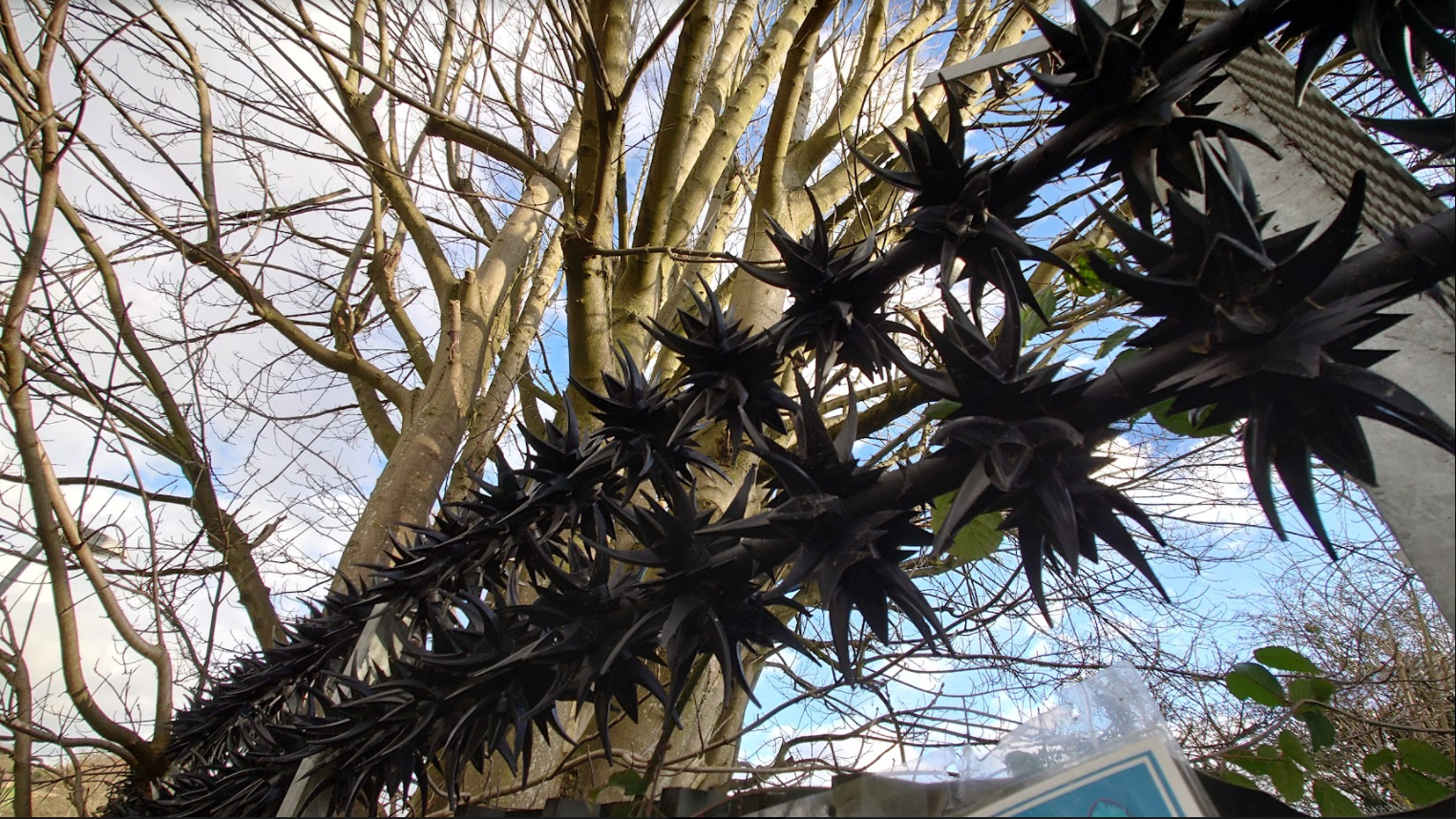
Sony Xperia Pro-I 16mm

Sony Xperia Pro-I 24mm
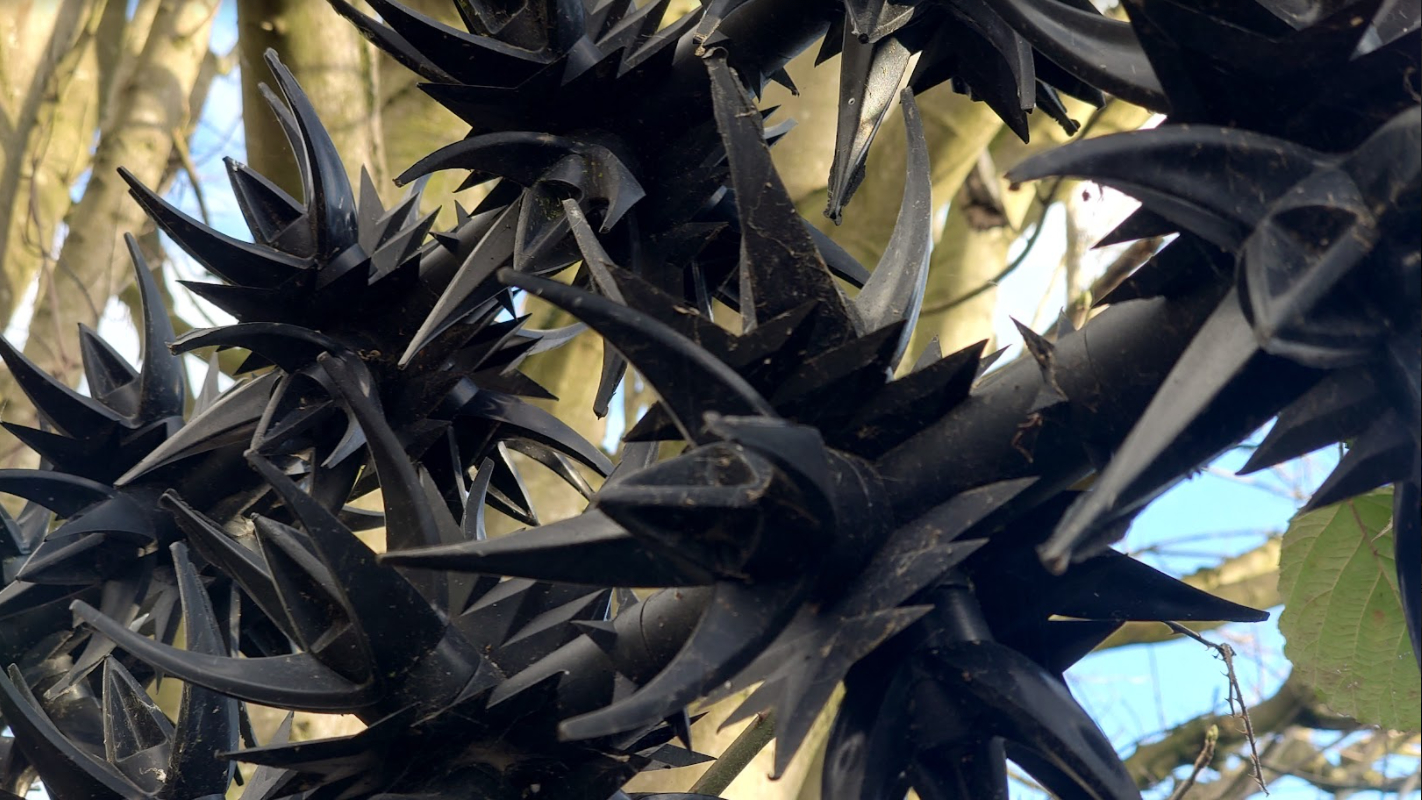
Sony Xperia Pro-I 50mm
There are a lot of features for photographers and videographers to mess around with, thanks to the BIONZ X mobile image processor. This includes phase-detection AF, Real-time Eye AF specifically for photographing people or animals, 20 frames per second burst shooting, optical image stabilization, 21:9 movie recording and more. Plus, I shot high-quality video in 4K HDR at up to 120fps, with audio separation tech to filter out wind or background noise.
From changing the lens on the fly to altering the frames per second it’s shot in, there are a host of easily accessible options to mess around with in the new Videography Pro app. Audio levels, shutter speed, ISO and more are shown at the bottom of the screen to keep tabs on, along with the recording time and battery left I had to work with. I also easily switched from auto mode to manual with a flick of a switch, letting me touch and track what I needed to be in focus. There’s also the option to zoom in and out by adjusting the slider, but this isn’t recommended, as this is where pictures can start to appear grainy.
As for the front-facing 8MP camera, it may not sound like much, but I took a detailed shot of my worn-out mug, even in a low-light setting. The eye-detection feature for sharp focus and hand gesture recognition to take pictures by waving are also a nice touch.
With the eye-catching snaps I took, I was easily convinced that the Xperia Pro-I has taken smartphone photography to another level. Not only is this a phone that camera enthusiasts need to keep an eye on, but people with any kind of interest in photography or cinematography can deepen their knowledge of how to capture the perfect shot.
Sony Xperia Pro-I software
The Sony Xperia Pro-I runs Android 11 and has no bloatware except for a link to a free 3-month Tidal subscription for lossless audio streaming. When starting up the Xperia Pro-I, the phone even asks whether I wanted to download apps that are considered bloatware, including Booking.com and the other usual suspects.
With Android 12 now out in the wild, the Xperia loses out on one major update. It’s been over a year since Android 11 came out (September 2020), and the Xperia Pro-I released in December 2021. Still, Sony’s Xperia UI overlays are nearly identical to the Android stock OS, with the bonus of adapting the screen and apps to the taller display. Plus, there’s easy access to the multi-window switch that splits the screen between two apps and the Side Sense bar for additional control.
As you can expect from a Sony phone, there are some PlayStation features. This includes PS Remote Play, Dualshock 4 controller compatibility and a game enhancer feature.
Sony does stumble with software update support, though. There is no official policy on how long the company will support the Xperia Pro-I, and history suggests you’ll only get two years of updates. This is disappointing, as you can get better software support from cheaper phones. Namely, the iPhone 13.
Bottom line
If you enjoyed what you saw in the Sony Xperia 1 III, but are looking for an extended photography and videography experience with a quality 1.0-type sensor Exmor RS CMOS image sensor, then the Sony Xperia Pro-I is the perfect smartphone for you. Now, do you hear how niche that sounds? The Xperia Pro-I isn’t the flagship smartphone for everyone, and even professionals will have a hard time dishing out $1,799/£1,599 for a device that doesn’t quite match up with the quality found on the RX100 VII.
Having said that, this is still a powerful Android smartphone that makes for a better camera alternative than a majority of its competition. I’ve said it once and I’ll say it again: from the dazzling 21:9 4K HDR display with a 120Hz refresh rate to the brilliant array of camera features, Sony has made another exceptional smartphone. Despite my high rating, however, I specifically didn’t give it my Editor’s Choice award as I did with the Xperia 1 III. This is purely because this isn’t the smartphone for a user that dabbles in photography from time to time like myself; it’s a smartphone that should spark interest in photography and videography professionals and enthusiasts alike.
If you’re after more of the best smartphones that offer a commendable array of cameras along with ridiculously high-powered specs, we’ve got you covered.

Darragh Murphy is fascinated by all things bizarre, which usually leads to assorted coverage varying from washing machines designed for AirPods to the mischievous world of cyberattacks. Whether it's connecting Scar from The Lion King to two-factor authentication or turning his love for gadgets into a fabricated rap battle from 8 Mile, he believes there’s always a quirky spin to be made. With a Master’s degree in Magazine Journalism from The University of Sheffield, along with short stints at Kerrang! and Exposed Magazine, Darragh started his career writing about the tech industry at Time Out Dubai and ShortList Dubai, covering everything from the latest iPhone models and Huawei laptops to massive Esports events in the Middle East. Now, he can be found proudly diving into gaming, gadgets, and letting readers know the joys of docking stations for Laptop Mag.
